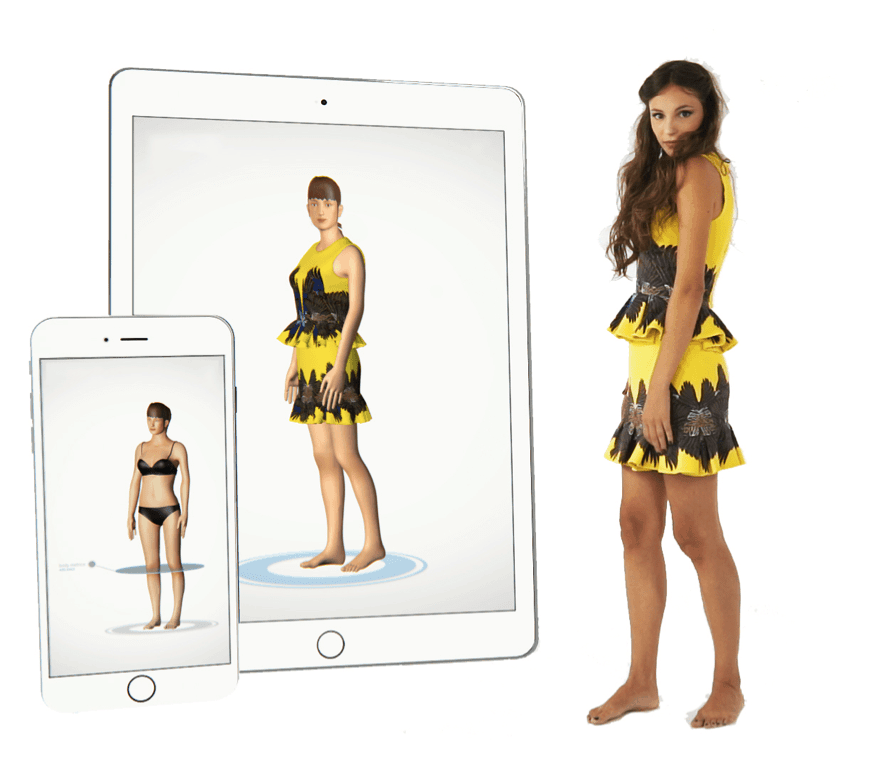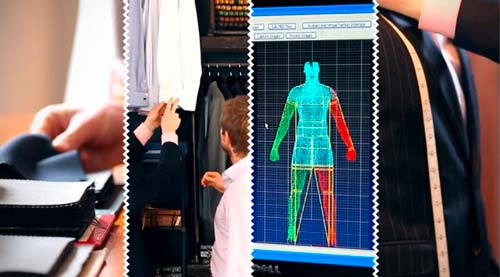Is 3D Body Scanning The Future Of Fashion?
Online garment and other product buyers have many expectations of their shopping experience, an important one of which is the ability to return ill-fitting garments for free without hassle. 3D Body Scanning can be a real drawback for retailers, who face the dilemma of either absorbing the cost or haemorrhaging displeased customers. Could this be an answer to both retailers’ and customers’ problems?
Finding the right fit is one of the toughest parts of online clothes shopping. Sizing problems are also the main reason for returns, but besides being an annoyance to customers they’re extremely costly to retailers. This due to the labour, shipping and inventory expenses involved.
Over the past few years, retailers have started partnering with 3D Body Scanning companies with the help of latest 3D Scanners to help customers find the right fit while saving money and reducing wasted time. So is the technology key to the future of retail?
What is 3D body scanning?
Body scanning is a non-contact, 3D measurement system that uses infrared depth sensing and imaging technology to produce a digital copy of the surface geometry of the human body. This generates a silhouette of the shape, and an extensive list of body measurements. The 3D data then can be exported for pattern construction, garment draping simulation and 3D body tracking.

While this has been around for years, the technology for mobile systems is not yet able to reach a satisfactory level of accuracy and reliability. Researchers are aiming to develop a breakthrough systematic method of creating a 3D body mesh—a polygonal representation of a body—from 3D scanned data, regardless of device.
“3D body scanning offers consumers the chance to upload their size metrics, and thus enable them to find clothes that fit them perfectly, every time… ensuring their time is well spent and offering a truly customised online shopping experience,” explains RichRelevance CMO Mike Ni.
This also provides a number of size data points that can be further used to automatically recommend accessories – belts, shoes, etcetera – and further increase loyalty and wallet share.
Fashion retailers implementing 3D body scanning:
While Selfridges and Bloomingdales introduced 3D body scanning booths in 2011, 3D body scanning technology is still relatively new and few retailers have implemented the service since, despite industry interest remaining high.
New Look introduced Bodymetrics 3D body scanning booth in its store in Westfield Stratford in London in 2012. Levi’s offers a similar service in its flagship store in central London; the service scans customers’ body to help them find a perfect pair of jeans.

However, purely online retailers are the driving force of technology because they provide a solution to the massive problem caused by returns.
Amazon acquired 3D body scanning company Body Labs in 2017 with the aim of improving Amazon’s Prime Wardrobe service, which sends customers a box of clothing to try on and return what they do not want. Implementing this technology could help Amazon offer shoppers clothes, shoes and accessories that fit better, helping customers discover more clothes they want and helping the retailer cut down on returns.
3D body scanning company Bodi.me works with brands such as Topshop, Forever 21, Next and some luxury brands like Ralph Lauren, Emporio Armani and Boss. It works by creating a 3D avatar that helps customers find perfectly-fitting garments after customer get scanned in store. The software compares their measurements with the exact dimensions of garments to find the perfect fit.
Other 3D body scanning companies include Styku, Me-Alit and mPort, which has rolled out 3D-scanning pods at shopping malls across Australia.
A case for 3D body scanning in the fashion industry:
Commenting on the future of this, Ni says: “Every year RichRelevance surveys consumers to gauge what they think is creepy and cool in regard to the latest in retail technology, gaining insight into the tech that consumers want to see as part of their retail experience. This year, 37% of consumers rated in-store interactive mirrors as cool, so it will be interesting to see how consumers react to this when purchasing.
“With Amazon’s purchase of Body Labs at the back end of last year, we may soon see them make a more aggressive play into this area of the fashion sector. This tech goes beyond simply trying on clothes, with it potentially allowing consumers to filter reviews by body type, offering consumers a truly unique experience. In five years, it may well be that we look back and think ‘how did I ever buy a piece of clothing from looking at a 2D image?’”

Visualsoft head of digital Gavin Lowther adds: “We could see online retailers creating changing rooms which give shoppers the opportunity to virtually ‘try on’ outfits through 3D face and body scanning technology in smartphones. When uploaded to a website, the tool will allow users to swipe across to their highly-realistic avatar dressed live on screen in different outfits. Options will be to purchase the whole outfit or just one-off items.”
Noibu marketing coordinator Bronte Assadzaheh comments: “In our opinion, 3D technologies are the future of retail. A difficulty that comes with shopping online is that you can’t try on the products to make sure they fit right. 3D scanning is a convenient way to solve the sizing issue and give customers a better vision of what the item would look like in person on them.”
If you want to explore more about 3D Scanners, 3D Scanning other and how to become a pro at Scanning, check out our Blog Posts here for very useful tips and tricks or contact us here to get in touch with a 3D Scanning expert!

